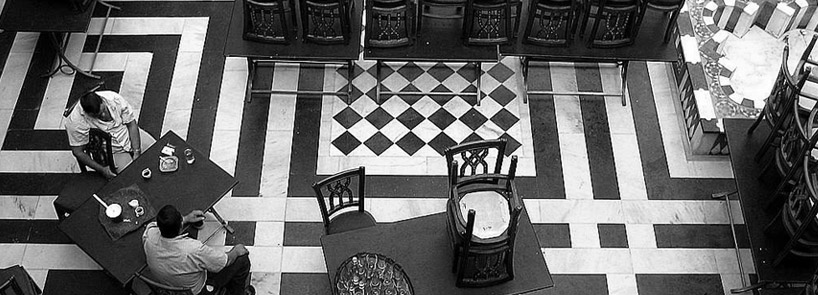The crisis exposed a serious malfunction among the regime team, with regards to achieving a minimum level of useful communication with a large segment of Syrian citizens. This generalisation goes to official, semi-official, private and even personal channels. These channels tried, without much success, to compensate for their lack of freedoms, and for the ambiguity of their roles and responsibilities, through injecting a huge amount of propaganda, which contributed to inflaming the crisis.
It is clear that the regime had worked, over the past decades on restraining the ability of the intellectual, the journalist and the citizen, in general, with regards to discussing issues that it regarded as sensitive, like public policies, the sectarian and ethnic issue, corruption, nepotism, and other sensitive issues. Throughout the same period, its media were limited to producing a shiny image of the state and leadership performance, whereas its strategy with regards to tackling the tough questions was limited to ignoring them and leaving them to time, which is a media strategy that fell dramatically and its shameful and costly failure was proven to an extent beyond comprehension. And whereas some private media, especially those that are internet based, achieved some progress, they very much suffered from an intensive and continuous limitation, from a chronic weakness in funding and they were not given the chance to become a substitute that would satisfy citizens who are desperate for credible news.
The result of all that was that, since the start of the crisis, media channels of Qatar (Al-Jazeera) and Saudi Arabic (Al-Arabia) and tens of other channels of many Arabic and Western countries, almost entirely monopolised the domain of news and opinion making. This decisive media control clearly pushed for forming a forced awareness among many Syrians, which led them to take steps on the ground, some of which are irretrievable. Moreover, tens of Wahabi or Salafi style channels, which are funded and operated by some Gulf states with Saudi, Kuwaiti, Egyptian or even Syrian staffs, contributed to inflaming congestion and intolerance among wide segments of the Syrian society, in addition to Arab fundamentalists, and contributed, in the end, to securing a continuous flow of volunteers who are mobilised for militancy against what was marketed to them as the enemies of religion. This media front that is loaded with heavy media weapons, was empty and totally deserted by the Syrian faction.
The normal Syrian citizen also contributed, through using Facebook (and to a lesser extent, Twitter), to increasing congestion by spending long hours on a daily basis in spreading opinions, articles and stereotypical images that reinforce the pre-position that they took, whether with this or that faction, along with accusing the other party of treason and ridiculing their opinions. With this, the social media contributed, in their turn, to increasing entrenchment among all parties.
And whereas Syrian official and semi-official channels tried, at the start of the crisis, to host some debate programmes, the intensifying of the crisis and the continuation of the incitement media from the other part soon pushed the Syrian media to entrench behind propaganda which focuses on a stereotypical image that glorifies all achievements of the national army and reduces the entire Syrian spectator spectrum in an idealistic image that supports the regime. This also contributed to increasing congestion in the Syrian and Arabic street, in general, with regards to the crisis in Syria.
All these elements, and many others that also circulate around the lack of dialogue or communication, contributed to creating and deepening a very severe polarisation that took the Syrian public opinion by storm in an unprecedented way. We now have two totally contradicting versions of the same events and the same crisis. Moreover, with the breakdown of the dialogue language, the learning mechanism broke down and every possibility to understand the motives and fears of the other party was paralysed, which created a general feeling of the lack of possibility for dialogue and the need for reverting to armed violence in order to impose the vision of each party on the other, as a sole solution that could be envisaged for the crisis. With the crisis going for longer and the propaganda media increasingly becoming relied upon, heavy fogginess prevailed in circulated information and news, which pushed the audience, which was already polarised and tense, to revert to building understandings about the crisis that could only be described as myths. Some of them deal with the causes for the crisis and some of them confirm the imminent victory and the imminent resolving of the crisis, so everyone fell into an empty circle whose title was violence, weapons and blood.
There is no way to break this deadly circle until the majority of Syrians get convinced that there is no other way, nor an alternative, but dialogue, and that there is no escape from trying to reach a common ground between them. Leaderships and major personalities in this crisis should be a role model for their audiences in showing their ability to listen and conduct dialogue, to accept the reality as it is and to stop inciting and regenerating the abolitionary and exclusive intellect.
And if we, as Syrians, cannot prevent fierce propaganda campaigns, and we all know that they are not doing what they are doing for the love of us, for the sake of us or of our country, nor in pursuit of better freedoms or rights for us, we can decide against committing an error in return for an error. We can decide not to be pushed by a journalistic crime to commit a similar one in return for another, and we can decide to stick to our ethics and humanity, no matter how hard this seemed to be.



